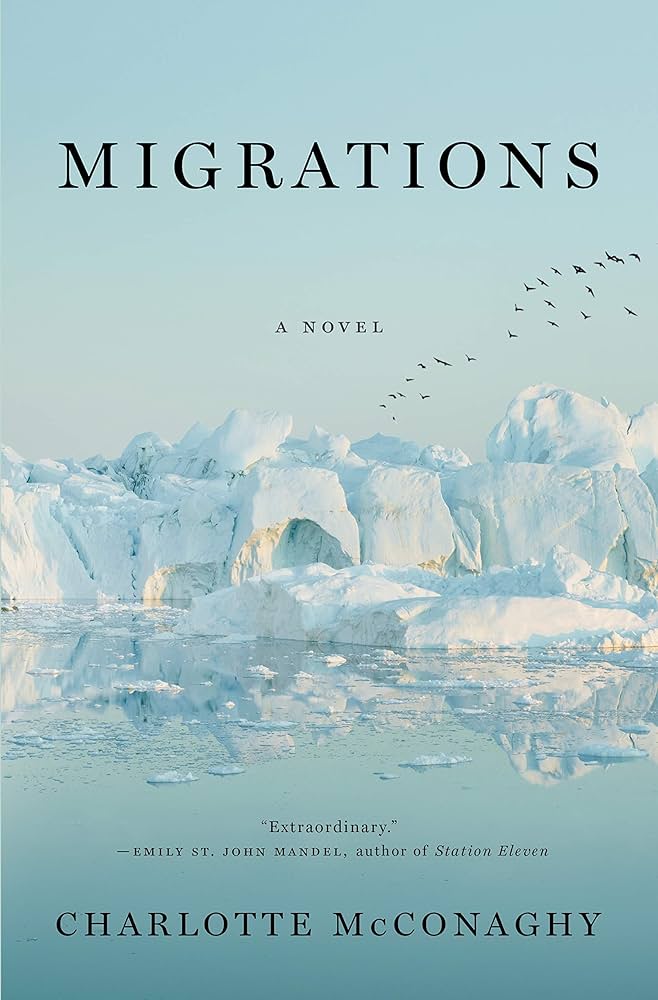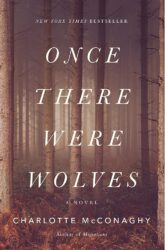The genre known as “eco-fiction” or “cli-fi” is not new; once grouped as works of speculative or science fiction, writings on the topic of global warming or climate catastrophe include such venerable titles as J.G. Ballard’s 1962 parable “The Drowned World.” One of Kurt Vonnegut’s first published pieces,  the short story “Tomorrow and Tomorrow and Tomorrow,” spoke to human overpopulation and environmental calamity.
the short story “Tomorrow and Tomorrow and Tomorrow,” spoke to human overpopulation and environmental calamity.
Eco-fiction is a genre filled with rich potential. Nature teeters on a balance between desolation (in the depths of the last ice age, a mere 20,000 years ago, the earth above the 45th parallel was mostly a barren, icy wasteland) and a quiescent ecotopia, which was arguably the last few centuries of our epoch. Environmental catastrophe and species collapse feel just a calamity away.
Our 2024 One Read winner, “Migrations” by Charlotte McConaghy, is set on such a dystopian earth, where environmental ruin has outpaced hope for the future. Overfishing is much to blame for this collapse, as is a general human callousness toward each another and the natural world. Most of the characters featured in this book, including protagonist Franny Stone, seem to be fractured, rudderless souls.
A hydra-headed darkness of both human and ecological brokenness permeates Charlotte McConaghy’s other adult fiction works, too. “Once There Were Wolves,” discusses similar themes and ideas as “Migrations,” primarily the resistance and callousness of human society towards other species whose existence has been snuffed out due to inconvenience and neglect. “Once There Were Wolves” was the beginning of a remarkable run of novels for McConaghy that will continue in with the forthcoming “Wild Dark Shore.”
Shore.”
According to pre-publicity for the book, “Wild Dark Shore” takes place on an Antarctic island, where there exist remnants of a colony of people who manage a seed bank. Imagine the real Svalbard Global Seed Bank, but at the other end of the Earth with ecological end-times nearer, in this case due to rising seas (harkening back to Ballard’s prescient novelistic warning in “The Drowned World” ).
).
In keeping with McConaghy’s other works this promises to be a psychological thriller interspersed with complex characters who experience profound trauma and loneliness.
McConaghy is not a newcomer to the publishing world. While her newest trilogy is for adults, she wrote two other series for young adults, which are deeply beloved by their readers. She was also educated as a screenwriter; which lends all her books a cinematic quality. And while the young adult titles have only been published in Australia, they are gaining popularity throughout the world. I’ve always felt that the YA genre is a serious place for serious writers; it isn’t by coincidence that all of Tolkein’s books are placed in our teen section at the library.
“The Cure” is McConaghy’s first trilogy of books targeted toward teens, offering readers a dark, fantastical journey into a totalitarian planet where human emotions have been officially muted so that there is little rebellion against the ruling elites. The books in the second trilogy, “The Chronicles of Kaya,” are named after their main protagonists, and each individual book (“Avery,” “Thorne” and “Isadora”) showcases individual acts of courage in yet another bizarre and broken world. Critics have compared these novels to “The Hunger Games” series by Suzanne Collins.
September is filled with all kinds of great One Read programming through the Daniel Boone Regional Library and other partners related to the book “Migrations.” Please find the list of these events in our program guide as well as online.


